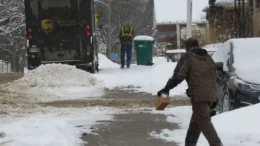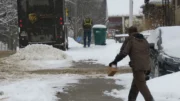By SALLY BELL
Staff writer
Cranberry School Board members have passed a number of measures aimed at protecting educational stability for students in foster care or who are homeless.
School board members took the actions Monday at their monthly meeting.
The first measure, an update to the board policy manual “Educational Stability for Children in Foster Care,” springs from the federal Every Student Succeeds Act, Cranberry superintendent Bill Vonada said.
Other school districts in the area are passing similar measures based from the federal law, he said.
The update requires the Cranberry school district to collaborate with the local children and youth agencies and other school districts to ensure the educational stability of students in foster care.
It also requires that procedures be put in place to maintain students’ best interests and educational welfare.
The board went on to approve another update to the board policy manual regarding homeless students and two memorandums of understanding with county agencies regarding transportation and other administration.
Cranberry currently has three students at the high school who are identified as homeless. The district could not provide any information about students at the elementary school.
Overarchingly, the policies aim to keep youths at their “school of origin” unless it is not in their best interest to do so.
“School of origin” is defined as the school that the child or youth attended when permanently housed or the school in which the child or youth was last enrolled.
For most students, staying in familiar surroundings is beneficial, Vonada said. “That’s their comfort zone.”
Unfortunate life circumstances can catapult a student into foster care or homelessness, Vonada went on to say.
Fire, flood, job loss and illness are just a few of the things that can create homelessness, according to the Pennsylvania Department of Education.
The McKinney-Vento Homeless Assistance Act, which was originally passed in 1987 and reathorized in 2001, requires public schools to ensure education for students who are homeless.
About two million Pennsylvanians experience homelessness each year and about one-half of them are children, the PDE said.
The definitions of both foster care and homelessness are sweeping. “They’re very broad,” Vonada said.
Foster care is defined in the school board’s policy as 24-hour placement of children away from their parents or guardians.
“This includes, but is not limited to, placements in foster family homes, foster homes of relatives, group homes, emergency shelters, residential facilities, child care institutions, and preadoptive homes.”
Students who are defined as homeless, according to the policy, are any who lack a fixed, regular and adequate nighttime residence.
They include children and youths who are sharing housing, living in motels or campgrounds, living in transitional emergency shelter or abandoned in hospitals, among other things.
Transportation is the biggest issue for most of these youngsters, Vonada said. Cranberry’s teachers are educated on such situations that may affect the district’s youths, he said.
“Everybody needs a helping hand once and a while,” Vonada said.



































